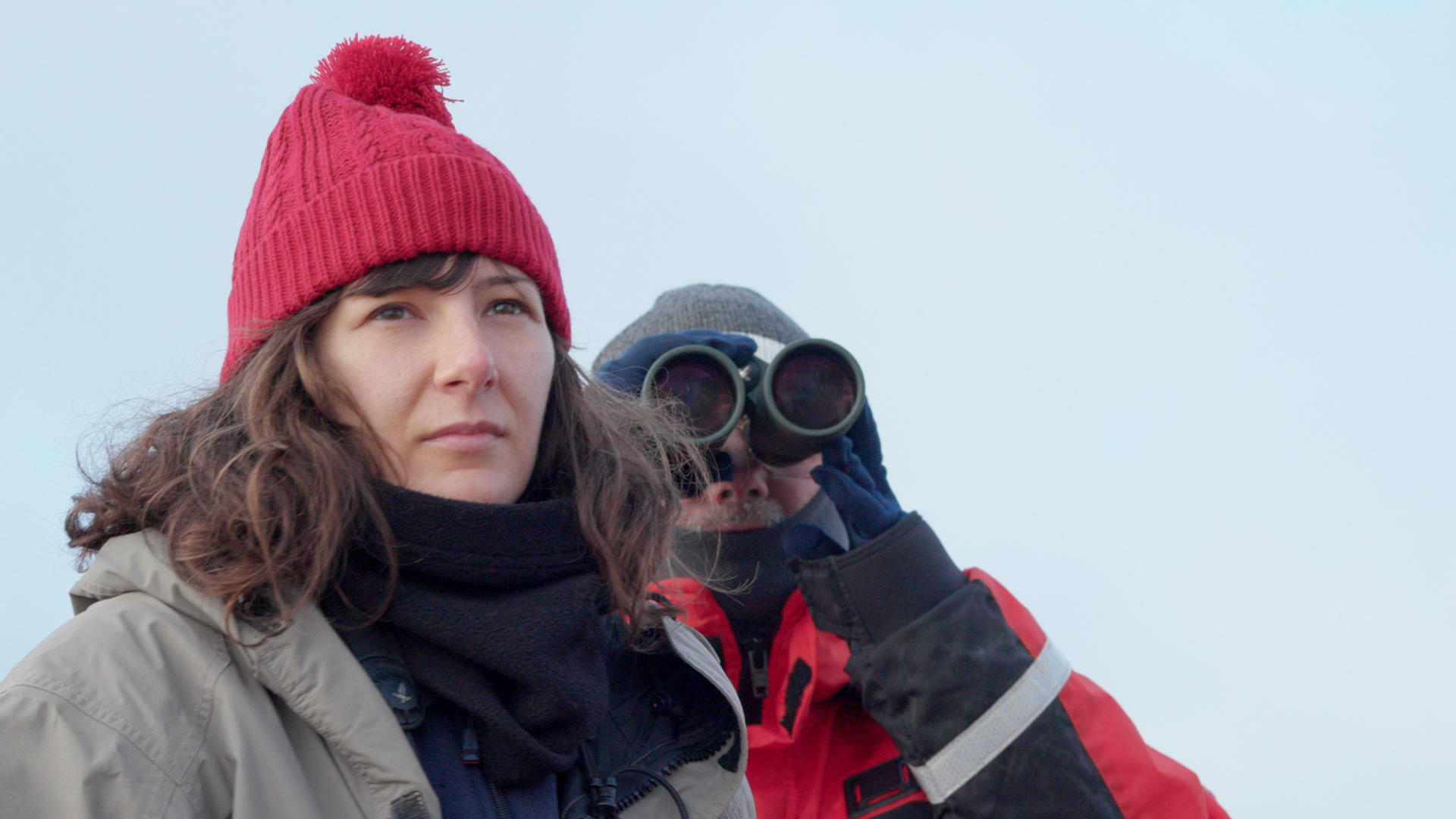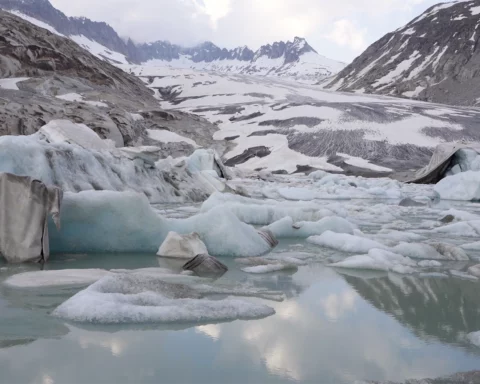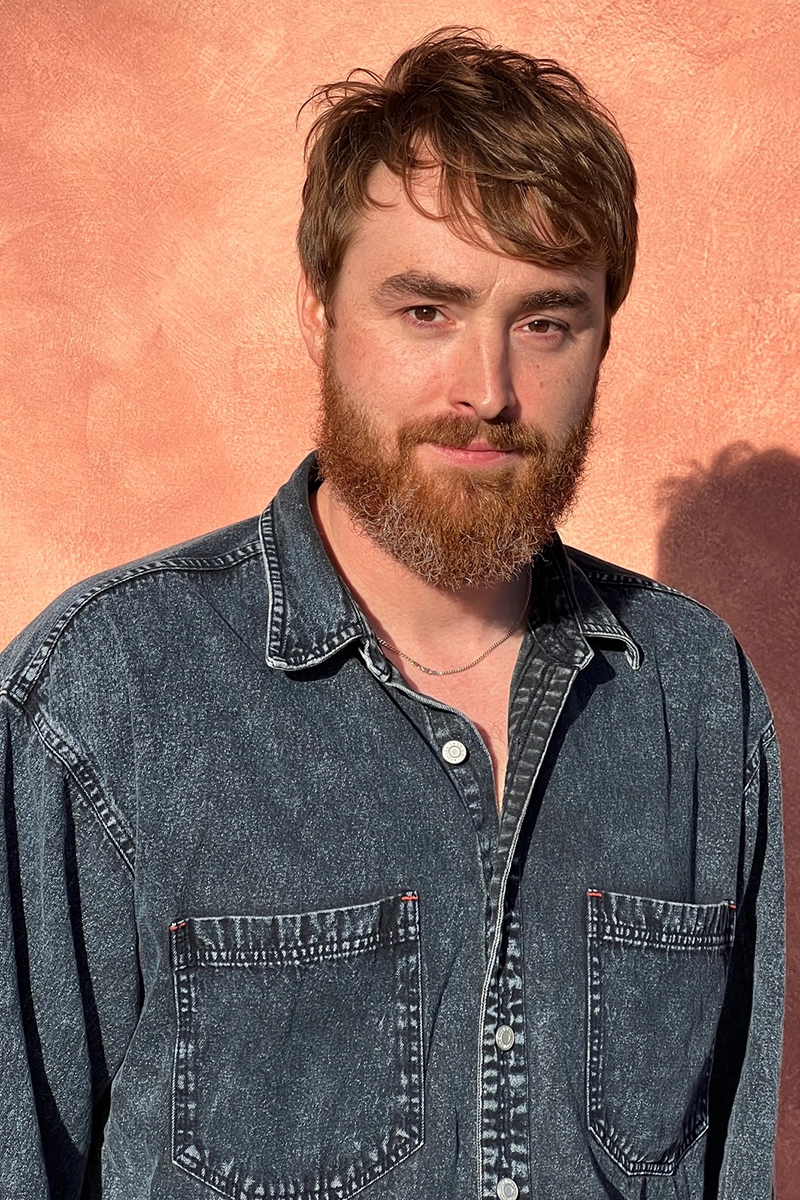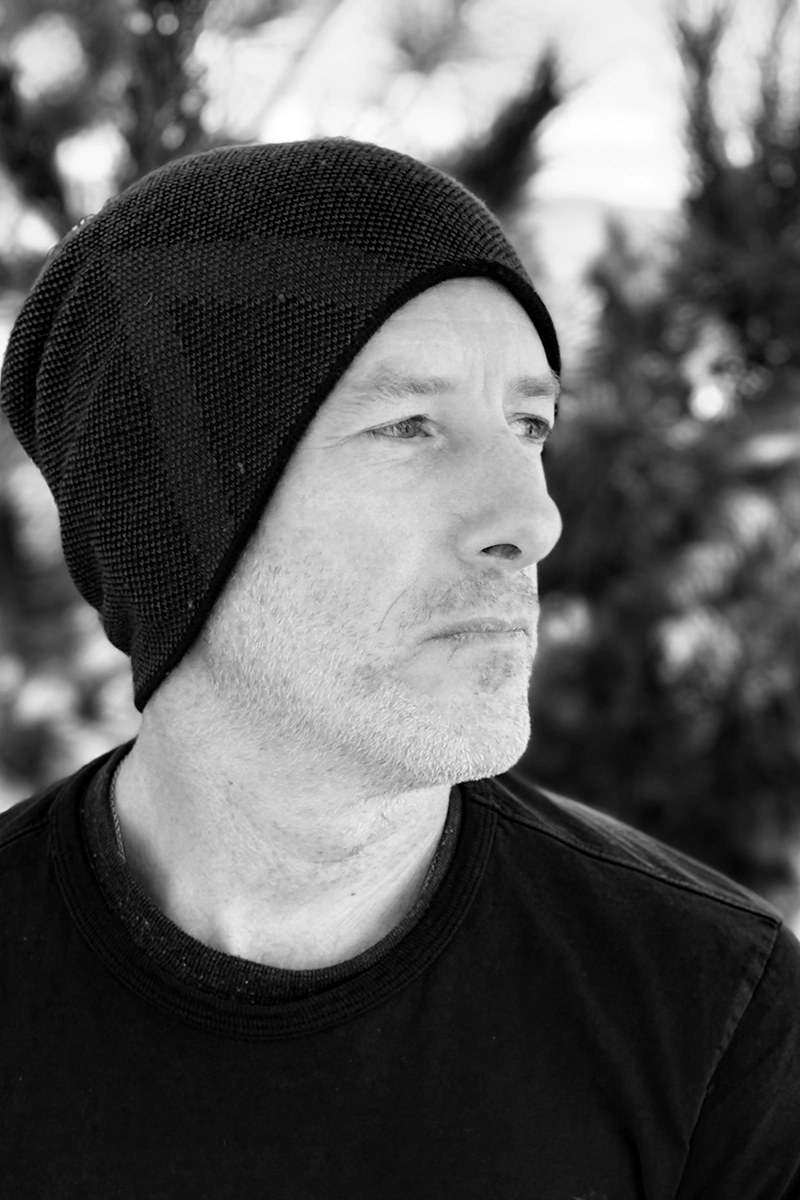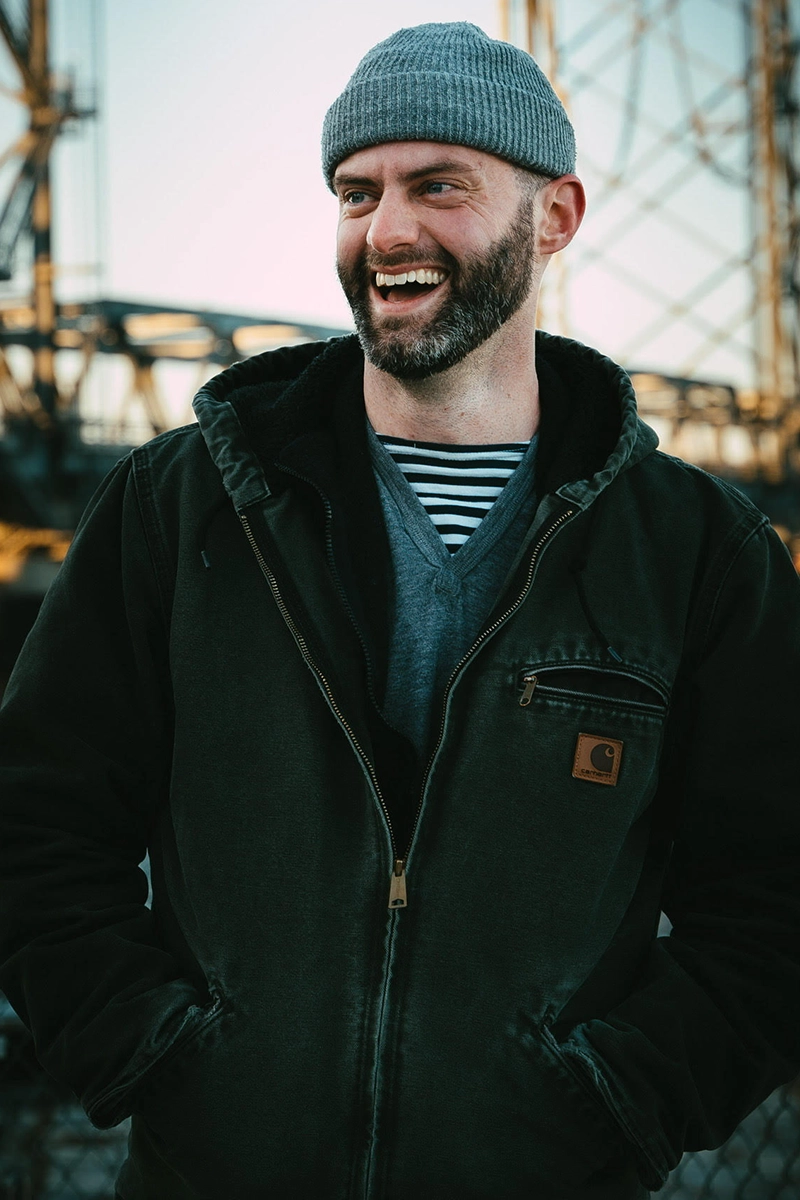Podcast (top-left-corner): Play in new window | Download
This week on the podcast, we journey to the far edges of the map — to the icy reaches of South Georgia Island — with award-winning filmmaker Kevin Schreck. His latest documentary, Antarctic Voyage, follows field biologist Dr. Samantha Monier on a research expedition into one of the planet’s most remote and fragile ecosystems.
Screening 04/14
Antarctic Voyage will be shown ONE NIGHT ONLY at:
Images Cinema,
50 Spring Street,
Williamstown, Mass.
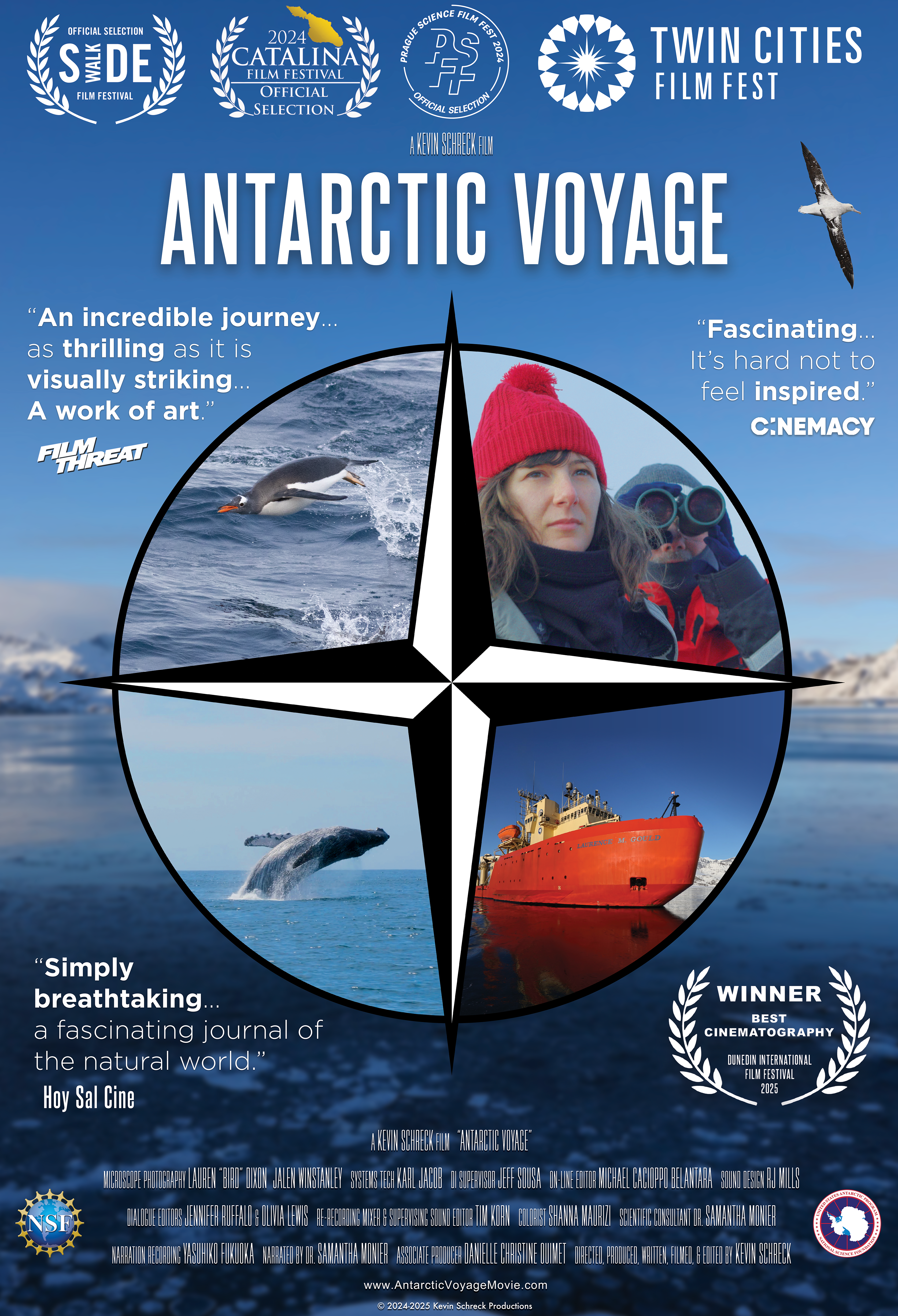
Part adventure story, part visual meditation, Antarctic Voyage steps outside the conventions of the typical nature doc to offer something deeper: a poetic, urgent look at the wild lives still clinging to the polar margins — and the scientists fighting to understand and protect them.
Stay with us.
Rough Transcript
The following transcript has an accuracy of approximately 98 percent.
Top Left Corner: And welcome everyone to another episode of the Top Left Corner right here at The Greylock Glass GreylockGlass.com. I’m your host, Jay Velázquez, and I have a really fascinating conversation lined up for you. We’re going to be speaking with Kevin Schreck, a filmmaker who was the recipient of both the Jerome Hill Award for exceptional work in the documentary tradition and the recipient of the Award for contribution to the Film and Electronic Arts Department of Bard College as an educator. Kevin has been a teaching artist and mentor at Real Works, a Brooklyn based nonprofit dedicated to helping young aspiring filmmakers from low income backgrounds and underrepresented communities get a start in the very competitive film industry. Kevin has taught master classes and guest lectures on filmmaking and film history at major colleges and universities in Australia, Denmark, and across the United States. Kevin, it’s so good having you here on the show. Welcome.

Kevin Schreck: Thank you. I’m glad to be here.
Top Left Corner: Well, we’re going to be talking about, um, Antarctic voyage, uh, a monumental, uh, work of of documentary filmmaking in this sort of, you know. Uh, documentary tradition, but with some definite differences, um, which I know we’re going to get into. Um, first of all, let me know and let our audience know, um, how you ended up on a research vessel, um, circling the South Georgia island in in Antarctica.
Kevin Schreck: Yeah. So. Well, I’ll jump to the moral of the story first, which is networking is everything. Um, because I was friends with someone back in college, Samantha Monnier and Sam, uh, her background, uh, earlier, uh, as a teenager was in musical theater. And so she always had a love of the arts and, uh, then found because she wanted to explore the world, um, a love of scientific research and adventure in those disciplines. And I was sort of the inverse of that, you know, uh, a filmmaker who, um, or aspiring filmmaker in college at least, who, uh, always loved the natural sciences, zoology, biology, paleontology, all those all those good ologies. And, um, we were friends then. We stayed in touch, became even closer friends, uh, after graduation years later. And then I would say, I think it would have been about 2018 or so. She reached out to me and said something along the lines of, hey, would you ever possibly, maybe consider, um, making a documentary in the Antarctic about scientific research and the wildlife down there. And of course, I said, yeah, I’d probably consider that at least. And the angle was that, you know, at this point, she was trying to get, um, what she needed to, uh, attain her PhD and a route that one could take with that is, um, trying to get a grant from the National Science Foundation.

Kevin Schreck: And the NSF was interested in what they wanted to do. They wanted to study what the wildlife was up to, especially like, um, pelagic seabirds and marine mammals, what they were up to during the winter time, the austral winter, that is during our summer in the sub-Antarctic. And see if that’s changed, uh, because they hadn’t done research like this in over 30 years, and a lot can happen in 30 years. So it was historic. It was interesting. But NSF understandably said, well, and of course they didn’t literally say this, but the but the gist of it was, this is all well and good and interesting, but we have to be realistic. Nobody’s going to read a dry, academic scientific paper about this. You have to find a broader impact so that the general public takes notice of this. And Sam’s idea was, well, lucky for us. I know a documentary filmmaker who loves science and animals and nature. Let’s see if he’s around. And that’s how I got involved.
Top Left Corner: Hmm. So your camera was essentially the key to unlocking the funding that, uh, that. Now, doctor, uh, Monier, uh, needed to to get this project completed. That’s really, really, uh, fortuitous. And. Yeah, uh, it is often who you know, right? Uh, networking is is key. So, um, had you ever. I mean, I know I see that you were born and grew up in Minnesota, so it’s not like you were unfamiliar with frigid temperatures. Um, had you ever had you ever been anywhere that barren before? As as Antarctica or seemingly barren?
Kevin Schreck: Um, no. I mean, you know, yes, I was I was prepared in a, in a, in a sort of beginner’s level sense that I actually, you know, tolerate or even enjoy the cold, uh, you know, but being on a boat on, you know, the Saint Croix River or Lake Minnetonka, a pontoon boat is very different from being on a research vessel in the Antarctic through the Strait of Magellan. Uh, but, um, but it was a challenge I was willing to take. You know, I honestly didn’t even know if I would get seasick until I was down there. Luckily, I did not, but the opportunity was too great to pass up the offer. Um, you know, it was. It wasn’t even on my bucket list to do this sort of thing, because I don’t really have a bucket list, but I try to be realistic. It’s like, oh yeah, I’m not. Probably not going to go to the Antarctic and I’m probably not going to go to outer space. So let’s just not even put those, you know, those dreams on the table necessarily. Let’s be realistic here. And then, lo and behold, someone is willing to pay me to do exactly that, to go to the Antarctic and make a science and nature film, but also have full creative control in doing so, which was a real boon. I’ve been spoiled with that for much of my career, but, um, considering that the stakes were high and the opportunity was rare, um, I was still given immense creative freedom. So once I got there, I actually quite enjoyed the landscape of it. I mean, I it sounds weird, but like, there’s something oddly humbling and refreshing about Being out in the open ocean, in a polar region and not seeing land for days. It’s. And that was through transit because we were mostly surrounding the island once we got there for the bulk of those four weeks. But, um, in transit, it is just emptiness. And I kind of liked that because, you know, I live in Brooklyn, New York, and I love living in New York, don’t get me wrong, but sometimes your day can be colored by, oh, I spent too much on that sandwich. That was stupid of me. Or like, damn it, I missed the train. I’m going to be three minutes late or something like that. None of those petty little things from civilization matter. You just feel small and insignificant. And yet, in a weird way, in spite of that smallness and insignificance that you almost feel when you’re also looking up at the cosmos at night. In spite of all that, I felt weirdly like connected to it like that I wasn’t the center of the universe, and human beings kind of naturally like, you know, see the world through their own eyes. But here it’s like I’m just seeing what I’m seeing in front of me. And, um, and I’m not distracted by all the petty annoyances of civilization. I’m just here for this adventure. And that was really kind of refreshing.
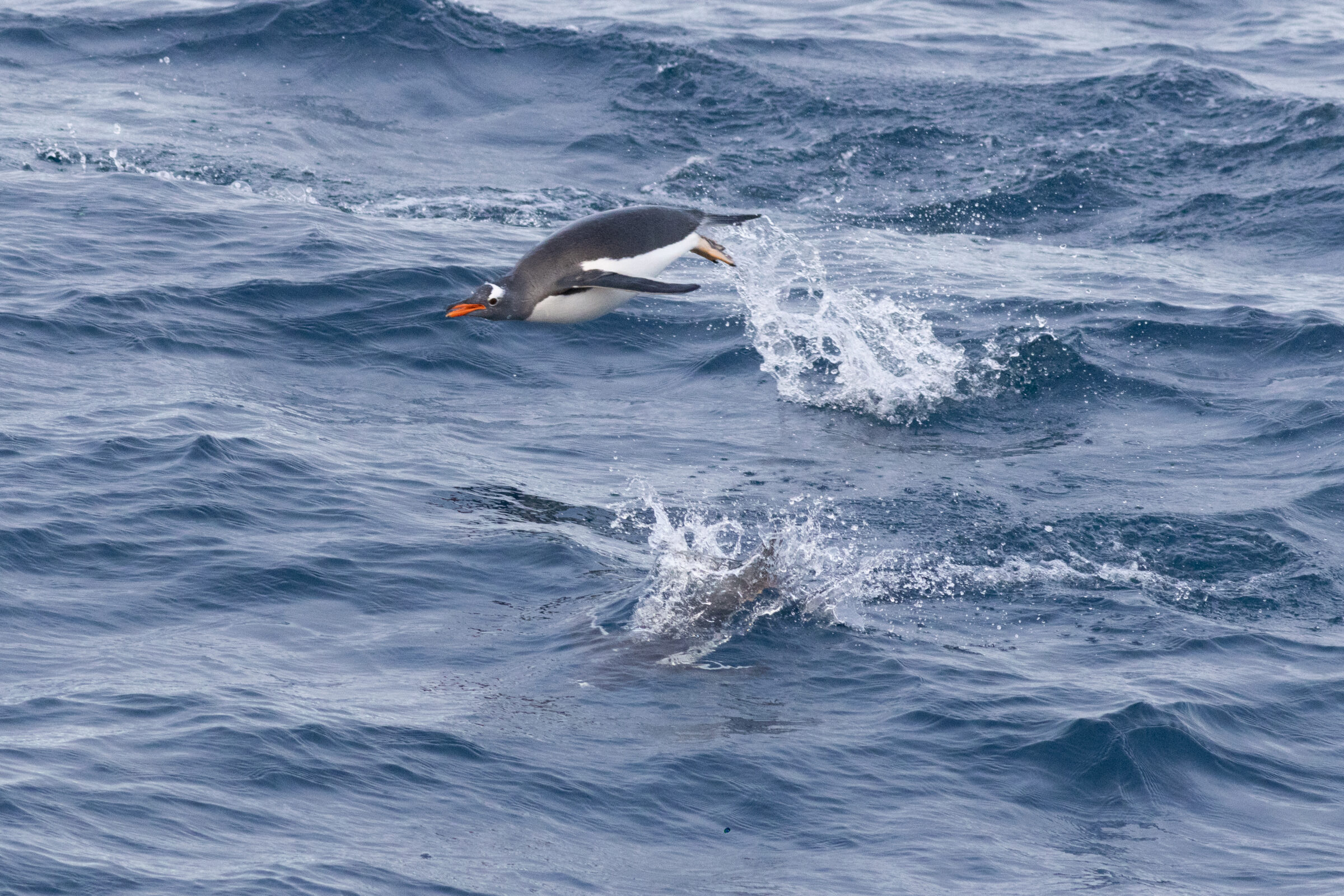
Top Left Corner: Yeah. I’m really, um. You’ve got the hairs in the back of my neck standing up. It was really kind of eerie because the word I was kept coming back to when I, when I watched the film was humbling. Um, there was just something so humbling. Um, you could tell. And I imagine seeing it on a much larger screen, uh, will be just devastatingly humbling. Um, and and you use the word connected, and I get that. I really get that, um, there was a time when I was standing on, on top of a mountain on the clearest night I’ve ever seen, and the entire galaxy See, I was bathed in the light of the galaxy and I had a similar feeling of wow, yes, I’m insignificant, but no more so than anything else, and no less so than anything else.
Kevin Schreck: Exactly.
Top Left Corner: Yes, it was really, really cool. There’s two. There’s actually three parts to this, to this film for me anyway. There’s there is the science of it, you know, the biology of it. There’s the filmmaking of it, and then there’s the cast of characters, um, which you did a really good job. Um, I think a really good job sort of giving us a flavor of this odd little community of people. Um, and you talked about seasickness. I love the fact that I can’t remember the crew members name, but he was a Spanish speaker who described how to get over seasickness. Sickness. Um. You said you didn’t know if you were seasick. Start with that, first of all. Do you remember his name? Um. And, uh, what was what was it like being on those rough seas?
Kevin Schreck: Yeah. His name was Herman. Uh, he was a lieutenant with the Argentinian government. And even though he was kind of assigned to our crews to, um, make sure that everything was kosher, you know, because this is sort of. I don’t know if disputed territory is the phrase, but, you know, Chile’s paying attention to what’s happening around South Georgia. Uh, Argentina is the United Kingdom is, you know, because America keeps their nose and everything. We’re kind of involved in that, too. So, um, there’s some diplomacy of like, okay, are we following protocol? And, um, you know, safety and for the local environment and everything else? Um, and of course, everything was just fine. Um, and he was a real sweetheart. Herman. Really nice guy. But yeah, I thought that, um, I don’t know. He has. He has such a calming, um, presence to him and such an authority to him. Um, that is kindly, uh, that I thought that juxtaposing the pragmatism of what he was saying, like. Oh, yeah. Makes sense. You know, keep your eyes on the horizon. Drink lots of water. Always good and healthy for you. You know, don’t stare at too many, too many electronic screens or read fine print on books too much. You want to, you know, keep stabilized.
Kevin Schreck: It all made sense. But it’s one thing to practice that and it’s another thing to actually do it when it’s like, okay, he says, go outside, get some fresh air and look at the horizon. And yet you’re being battered by the wind and the sleet and, you know, it’s like it’s kind of impractical to do that. He’s not wrong. But I don’t know. I thought that was a cheeky sort of way. Kind of funny that it’s like, yeah, that makes perfect sense. Then you do it and it’s like, or you attempt to do it and it’s a little too crazy to pragmatically do that. Thankfully, I did not get seasick, though I had one. The hardest moment is early on in the expedition, partly because you’re first getting used to that environment, and secondly because the waters are roughest. Um, at the beginning of the voyage, as you’re going through the Strait of Magellan, we didn’t have to go through the Drake Passage. Thankfully, that would have been even crazier. But, um, even then, the the dead of winter, uh, in the Antarctic and sub-Antarctic can be pretty rough. Yeah, but we were okay, I was okay. At least some folks were fared better than others.

Top Left Corner: Well, it’s, um, you know, I looked up the, uh, the average temperatures in winter, in the austral winter, uh, on South Georgia island. And I was surprised to find that it usually hovers right around 32°F or zero Celsius. Um, so it’s.
Kevin Schreck: Not bad. I mean, for me.
Top Left Corner: Yeah. Yesterday, uh, there were many of us standing out in the hands off rally that was taking place. And here in Williamstown, um, I would say that we were getting winds and sleet, much like you got there on the boat there. It felt really brutal, actually. So let’s talk. Let’s start with, um, let’s start with the science of this. Um, and, and of course, also, um, doctor Samantha monier. Um, it’s it’s interesting you described her as as a sort of charismatic figure. And I would say that she looks like the actress who would be cast to play herself, uh, in this role. Yeah, she’s definitely got a she’s got a magnetism about her and a real a depth of seriousness about the mission. Um, what was she. You know, we were saying we want to find out what’s going on with the wildlife. Um, and, um, and I had used the term baron. Explain to me why that was probably. An inaccurate term. And what specifically was was. Sam looking for?
Kevin Schreck: Well, it does look, Baron, when you’re above the water. Um, but once in a while there’s some action. Most of the action is happening under the water. I mean, you know, we think of penguins, and they’re very charming and physically awkward creatures, standing upright like little bird people in tuxedos. But they’re. That’s only because they only go to shore to breed. Basically, they’re basically marine animals. Um, and that’s when they really come to life. Same with seals, which are equally even, maybe even more awkward on land blobbing around. Um, but then they become these incredibly elegant beings under the waves. And of course, whales have to be in the water at this point in their evolutionary history. Um, and are perfectly suited to that. So it does seem barren when you’re above the water, but all the action is under the water and sometimes it percolates up. And that was sort of the adventure of it and the trickiness of it. You know, Samantha and the rest of the scientists are incredibly well trained to look for, I guess you’d say zoomorphic forms, like just anything animal shaped. And I am as a layperson because I like animals, but this is their career. This is their work. So and not only is zoomorphic forms where, you know, you and I could recognize, say, like a bird in flight or, oh, there was something torpedo or potato shaped bounding out of the water for three seconds and now it’s gone. They will know what species it is. They have to know what species it is, even if it’s incredibly far away, even if it’s from a tricky angle, even if it’s very briefly.

Kevin Schreck: So what they’re really studying, I guess, to put it in simpler terms, is, um, because it’s a barren landscape, uh, above the water, the birds that hang out above the water like petrels and turns and albatross and these things. Um, they’re looking for activity that percolates out of the water from, like, penguins. Antarctic fur seals, baleen whales, even orcas. Um, and they’re looking for activity that’s bubbling around and moving around in a certain direction. And they’re looking for shoals of krill. And there’s literally quadrillions of krill down there. I mean, the biomass is insane. And they’re an incredible, incredibly important part of not just the local ecosystem, but the global ecosystem. Um, these little crustaceans. So they’re looking for almost like restaurant billboards on a freeway. You know, you go down a freeway in the United States, and it kind of feels a little barren. But then you see, you know, eat at Joe’s, you know, 20 miles next right turn. That’s what they’re looking for, too. They’re looking for, like, you know, the spouts of whales or a huge team of fur seals congregating with penguins. It’s like if they know where the food is, they’ll follow that and they’ll kind of follow each other. There’s even evidence that whales are watching birds, too. So everyone’s kind of accidentally looking out for each other, not like in some stroke of interspecies altruism necessarily, but they all stand to benefit if they’re all feeding together. It’s kind of like it’s hard to find that food.
Top Left Corner: It’s kind of like if you see a tag sale, a yard sale where everybody’s like congregated, you’re like, ah, I better stop at that one because there’s some good, good finds there. Or or I suppose if you see that eat at Joe’s, uh, diner and you see the, the parking lot is full of cars, you’re like, oh, that’s probably a pretty good bet there.

Kevin Schreck: Um, yeah, you might have to.
Kevin Schreck: You might have to. Oh, I’m sorry, I’m just going to say you might have to deal with, like, some competition, like, oh, how long am I gonna have to wait in line? You know, are they going getting a good table, but you know, there’s going to be grub there. You know there’s going to be food. And in the end, when it comes to survival in the natural world, that’s the most important thing. Do you get enough calories and nutrients to survive? And, um, you know, create the next generation and so on. You know, like, that’s that’s the name of the game because it is a desert above the water. Right. But the action is underneath.
Top Left Corner: So there’s one species, uh, and this seems to be so often the case, there’s this one keystone species that makes it all possible down there. And the fact that this research hasn’t really been done. Um, you know, uh, of, of a species count, a species examination in the austral winter down that far south in 30 years is important. Can you talk about that species? Um, the only one who’s not happy to see the the whales and the the other animals.
Kevin Schreck: Right.
Kevin Schreck: Well, um, it’s a it’s the Antarctic krill. And there’s many different species of krill. But this krill goes by the scientific name Euphausia, and it’s about the size of your thumb. Um, it’s kind of a big krill. Some krill are teeny tiny, like, ant sized. Um, this is this is kind of a juicy one. So, of course, if you’re like, an 80 even 100 foot long whale, um, that weighs so many tons. That’s what you’re after is, like, the quality stuff. The thing about the Antarctic krill is that it’s a little finicky. It it it it goes lives up to its name. It likes the cold. And with temperatures rising, uh, the range of the Antarctic krill is diminishing. And if that major keystone food supply is diminishing, so too might the populations of the animals that feed upon it and the animals that feed upon them. So it is really, um, an essential ingredient in that ecosystem.
Top Left Corner: Mhm. Yeah. Because there’s not there are not a lot of other places to go if that’s, if that is your main, you know, your main dietary uh supply. If the Antarctic warms up by too many degrees for the Antarctic krill to, to thrive, then it’s not like whales can just change their diet, you know, and decide they’re going to start eating whatever, um.
Kevin Schreck: They could and maybe 10 million years or so, but they don’t have 10 million years. The environment’s changing so rapidly. It’s like, you know, a geologist friend of mine likened it to what’s happening now to basically being a quieter version of the asteroid strike that hit the dinosaurs. It’s like, that’s kind of how big this feels as a ripple effect, you know? Um, so it’s just that it doesn’t have the big explosion accompanying it. It may not be quite as quick, but it’s it’s it’s significant globally. Boy.
Top Left Corner: It’s, uh. It’s terrifying, to be honest. Um.
Kevin Schreck: It is, it is.
Top Left Corner: So let’s, uh, let’s talk a little bit about how you prepared for this as a filmmaker. You probably had some ideas. Um, I mean, talk to me about what kinds of equipment, kinds of, um, techniques you were planning on using, whether you’re using drones or whatnot. Um, and what ended up being your sort of technological toolkit?
Kevin Schreck: Well, the main reasons I was able to prepare, and we had ample time to prepare, partly because our, um, this takes so much planning, uh, in advance, but also due to a combination of, um, the I mean, everything is interconnected. The invasion of Ukraine, um, jacked up fuel prices, and there were new Covid variants that were a little bit concerning. Um, our whole expedition was postponed by a whole year. We didn’t know that until I had to have military grade medical inspections. They have to make sure that your your blood work is okay, that your skin is okay, that your mental health is okay. Like, are you stable enough to be thousands of miles away from a hospital or a psychiatrist or a dentist’s office? Those are all military grade concerns with your medical health. I even needed to undergo surgery to qualify to make this film, because I had a wisdom tooth that was wasn’t bothering me, but was a millimeter or so out of place. That was an automatic no. If it was there. They were like, yeah, if you if you have a rupture while you’re en route, we can’t take care of you. You can’t jeopardize the the voyage. Hey, and you know, I agree with that, but yeah, I had to get surgery to qualify, so that was the main way. And then we had to double check all of those medical things, every every diagnosis, every every, you know, joint in tooth, every orifice, everything you can think of had to be checked for your health. Um, a second time around, and thankfully, I passed. And so did Samantha and the rest of the folks on the cruise. Um, the other thing I was preparing for was the fact that I had not, uh, worked in a polar region before, and so I had to be pragmatic and, uh, careful that like, sudden changes in temperature can lead to moisture getting into, um, your gear, you know, condensation can really destroy these complex computers that we call video cameras.
Kevin Schreck: So that was a real concern. And, you know, being ready for, like, backups and having two of everything for safety. Um, and then once I was prepared, um, all of our checked luggage was lost in route, you know, actually, also, again, everything is connected due to, um, anthropogenic climate change related, uh, summer storms on the eastern seaboard. The day we were going out to South America, 10,000 flights were grounded, delayed or canceled altogether on the eastern seaboard, including ours going to South America. We barely missed a second flight there, and I was prepared for it because I was so militant to have the most essential, irreplaceable gear within arm’s reach. So all my carry ons and personal items and even Samantha’s, to a certain extent very generously of her, because she knew the importance of this trip and that we, you know, couldn’t have any foul ups. Um, she also made room for my camera bodies, battery packs, lenses, cleaning supplies, etc. that meant that everything else that was too large say tripods or like the GoPro kit that she had, um, or my shoulder mounts or even more essential things, arguably like clothing and toiletries. Those were all lost in transit. So we had to, like, get a new wardrobe together. Uh, just before we headed out at a strip mall at the end of the world, as they say.
Kevin Schreck: In South America, there is a strip mall there. And we got our necessities clothing like underwear and socks and things, uh, and t shirts. Um, and I was prepared for that. But then it actually happened. So I really had to knowing that this was a low budget project, that we had literally less than 1% of the budget of one of those beautiful fancy, you know, Sir David Attenborough, BBC nature documentaries, uh, that I was the only official filmmaking crew member, that I was a one man band, which again, I’ve done before, but not in a polar region, not at sea, not for that long. Uh, and not without access to a store that could get me more batteries or clothing or whatever it might be that’s necessary. Or, you know, fix up lenses if they got scratched or damaged or something. None of those were options. And then I that I kind of had to really make it feel more handmade. But I actually prefer that with documentaries because, again, those those National Geographic and BBC specials that are with the ultra fancy slow motion and 4K, I mean, you know, with the drone shots and crane shots and all that good stuff. Um, not only was that not within possibilities here, but also they’ve already perfected that. Why would I want to imitate a style that they’ve already perfected? I have to do it in my own way. I love those films and was inspired by them for sure. Grew up with them. But this was my chance to make something that only I could make. Um, and have that creative control and have that, I guess, vision, um, and kind of make it for myself in a sense. I mean, the film that I would want to see there, you know, the best kind of films are the ones that you want to have exist in the world. And so those limitations, those surprises were not too troubling. Um, people have conducted scientific research and explored the world and even made movies with very little, even less than we had. So it was possible, and I think I’m glad to see it mostly worked.
Top Left Corner: Well, if I, uh, if I’m not mistaken, naturalists used to bring, uh, pad of of paper, a journal and, uh, and pencils, uh, and they used to have to draw what they saw, uh, which, uh, you know, it’s sort of a certain style of art in itself. These, these, uh, nature journals that, uh, were coming out of the mostly the 19th century, uh, here in the States. Um.
Kevin Schreck: So, yeah. And that was, you know, as an aside, I mean, one of Charles, I was just listening to his an audio book of his autobiography. One of Charles Darwin’s great regrets in his career is that he never learned to draw, because that was such an important thing. You didn’t have photography back then? Um, he wasn’t a good enough illustrator, but. But, you know, we made it work. I mean, there was even someone on the voyage. It didn’t. It didn’t make the final cut. But someone was doing these, you know, like a college student was doing gorgeous, you know, natural history illustrations of the organisms that we saw. I mean, there were actually a few people who were creative. It just it didn’t make the final cut, but it’s, um. Yeah, it was nice to see that there was real passion among everybody.
Top Left Corner: Well, let’s, uh, for our filmmaking, um, nerd friends out there. Um, what did you end up using? Um, you know what? What gear was your, you know, sort of your mainstay? And did you have a drone?
Kevin Schreck: Oh, no. Well, I mean, the drone. The National Science Foundation said that we could use a drone, but they were incredibly specific about, you know, you needed a drone pilot’s license. You needed to know exactly what coordinates you would be on the map when you were using them. You need to know exactly what time of day and where you were because it’s a potential pollutant. It’s a potential irritant to the local ecosystem. So I agree with all that. And so we didn’t use a drone because it was just impractical. We didn’t even know where we would we would be on certain days. Um, and it would have been another skill that I would have to have. I mean, I’m a one man band. I only have one brain and two arms and two hands and one pair of eyes. It’s like, I can’t I don’t have the bandwidth for all that. And I realized we didn’t really need it because I think making it a little bit more intimate, it’s more from the POV of someone actually on the vessel, because it is from the POV of someone who’s actually on the vessel, on the bridge, and on the decks. Um, but I think that’s kind of what makes it feel more intimate and relatable to people is that it has that handheld human touch that sometimes the big, gorgeous, lavishly photographed, um, expensive nature documentaries, again, as wonderful as they are. As much as they reach and inspire people globally, they may not have quite that tactile presence and that intimacy because of the scope that they’re aiming for. And mine by, by necessity and also personal taste was a little bit more humble and modest and handheld.
Kevin Schreck: So what I had was a couple of C200 cameras, and the reason why I had two initially was, hey, if one gets damaged beyond repair or one falls into the ocean or something, I that can’t end production. So I needed to have two. But I also found it was very useful because when I was on the bridge with the scientists who were counting the vertebrate predators, the birds and the and the marine mammals and such, uh, in the daytime, it was useful to have those two camera bodies, because if nothing was really happening on that barren oceanic landscape, I would be in the bridge watching the scientists, you know, having them talk to each other. And I would have a short length lens for that smaller space. When actions started to come on the horizon, you know, like the big family of humpback whales congregating with literally hundreds of fur seals and penguins and petrels all devouring the krill together. That’s when I had another camera. Again, the same kind of camera with a long range telescopic lens up to 600mm. Um, that give us those majestic long range shots. And I didn’t have to then risk being overly excited and, you know, disconnecting a lens and then putting it on the wrong way and breaking something. I just had long range, long range lens here and short range lens there. And anytime it was the right time for one or the other, I could just click one off and click the other one on and just roll immediately. So that was a real time saver.
Top Left Corner: Run and gun. Nice.
Kevin Schreck: Um, and being hooked up with the microphones was helpful too, because when I was on the bridge, you know, and maybe, like, trying to see what they were seeing with their eagle eyes, I had them on lavalier microphones and could hear them through the wireless system on my headphones, and they could tell me at first accidentally. And then they realized it was almost like AA1 way walkie talkie kind of situation. They could tell me, like, you know, um, 90 degrees off starboard, you know, 500m, you know, uh, five gentoo penguins and try to film that as best I could.
Top Left Corner: Cool, cool. Because they’re looking for it anyway. Yeah.
Top Left Corner: Um, that’s really neat. Um, so there are some scenes that, uh, look like you must have been as high up on that ship. I know it doesn’t have. Does it have a crow’s nest? Does it have anything like that? It looks like there’s some places where you must have been at the very top of that ship. Taking. Taking, uh, you know, shots. Uh, did you ever find yourself in a sort of precarious, uh, mount?
Kevin Schreck: I’m a I’m a I think of myself as a pretty resilient person who’s pretty rational when it comes to, you know, fears or anxieties. But one of my weaknesses is heights. Um, I have to admit, not not an not an irrational fear when, uh, you’re in the middle of the ocean.
Kevin Schreck: You’re, uh, 4 or 5 storeys high. Um, and you haven’t gone swimming since you were a kid. Um, but I didn’t worry too much because one maybe it was impractical of me, but, you know, the shot mattered most. Um, and, uh, so I think I staved off some of my more landlubber fears there. Um, but also, I didn’t have to go too, too high because, um, the ship, I think, was tall enough at the bridge where I could see most of the action. I’m glad it felt like I was so high up and that I had to get to these difficult vantage points. Um, because I guess that means it feels like it has this scope and intimacy. There are certain shots where I am up high and you can kind of see, like directly ahead of what the boat would be seeing, what the ship would be seeing. But even that is me right in front of the bridge outside, you know, and, and in those cases, it was just I would just have my, my, my smartphone because sometimes the weather would be so precarious that I wouldn’t want to risk like salt water or wind knocking into or knocking off my expensive $10,000 setup. And the iPhone, as precious as these little addictive machines are, is technically more replaceable than the C200 setup that I have, right?
Top Left Corner: Also with the C200 having two of them, doesn’t it mean that you really I mean, it’s kind of like when I am doing a show, I would like to be able to have the same microphone. Um, wherever I’m like, if it’s all in the same episode, I’d like to sound the same. Um, from a cinematographers point of view. Um, is it sort of the same with with cameras? Like having the same model gives you a much more. Um, yeah. So do you have the same?
Kevin Schreck: Yeah, yeah, same for sure.
Top Left Corner: Tones and things like that.
Kevin Schreck: Yeah.
Kevin Schreck: I mean, a lot of documentaries are sort of a hodgepodge of ingredients. I mean, you know, to a certain extent there’s, you know, there’s slo mo, there’s things that are shot at a normal frame rate of 24 frames per second, something that we’re more naturally used to watching. There’s, um, sometimes archival, you know, there’s a sprinkling of that and a sprinkling of, like, stock when we needed it. Um, there’s interviews, there’s handheld cinema verité footage. Um, so, yeah, I think a lot of audiences are used to. Okay, it’s a documentary. There’s going to be a mix of stuff. Um, and I like that. But I do think, yes, almost from a world building or stylistic point of view, that it’s like there’s a certain tone, a certain texture that your gear might have. I’m not much of a techie, honestly. Um, for better or for worse, probably for worse. Um, I don’t know a lot about the technology that I work with, but I’m a big believer that the the, uh, tool is not as important as the tool user. But of course, some tools are better than more functional or more appropriate for certain contexts than others. And it was useful to have two of the same camera just to make sure that we were, um, consistent and, you know, building this world. And, and, and I really am thankful that you said that it felt humbling and interconnected and that it had this scope to it because I wanted it to feel cinematic. I wanted it to feel like, you know, in spite of the fact that it has 1% of the budget of a David Attenborough documentary these days. Um, I didn’t want that to feel like it was a hindrance or a limitation in a bad way, that it still could have a sense of grandeur.
Top Left Corner: Yeah, I don’t think. I don’t think you have to worry about that. I will say that the the ship, this research vessel, it’s it’s surreal to see it amongst the, the icebergs because it completely destroys any sense of scale. Like how big is the ship? I have no idea how big that ship is. How big is the iceberg? I have no idea how big that you know.
Kevin Schreck: Yeah.
Top Left Corner: And you’ve got this.
Kevin Schreck: Well, and.
Speaker4: That was good.
Kevin Schreck: That was something I was mindful of when making it, too. Sorry. Didn’t mean interrupt. I’m just going to say, for anyone who is wondering that watching it, I’m going to use it in the most American terms possible. The ship is about the length of a football field. And, um, I actually was very conscientious of that when of the scale of the landscapes when making it, because I wanted to make sure it was accessible to like younger audiences or people who are less science savvy, or maybe English second language audiences and say that not use only use units of measurement and numbers when they were big and impressive, but otherwise you is much more approachable thing. So I describe or I have Samantha describe rather in her narration. Um, the tops of the icebergs is sometimes being as big as apartment buildings or skyscrapers. And of course those vary in size, but you have to think that this is not just a clump of ice that you find in your backyard. This is a mountain of ice. And as a lot of us maybe remember from our youth, you’re only seeing 10% of the iceberg on average. The other 90 or so percent is under the water. So it really is like a mountain of ice.
Top Left Corner: Yeah. The ice wall that, um, that you describe in the film as being, um, 5000m long, no, five kilometers long and 500m tall and 500m tall, is slightly more than 1500ft, which is really, really tall.
Kevin Schreck: Which is even still hard to wrap our heads around. Like, how many stories is that? You know? It’s like. And you know, and how many, how many, how many, how many people is that or whatever, you know, it’s like whatever your unit of measurement is, it’s a big number.
Top Left Corner: Yeah. I mean, roughly a 50 story building.
Kevin Schreck: Yeah. That’s just insane.
Top Left Corner: To think about.
Kevin Schreck: Yeah, yeah.
Top Left Corner: So, um, there’s a couple other things that I really wanted to to sort of, you know, lavish praise on you here. Uh, the light, um, in your your capturing of different times of day. Um, tell me, because the light is almost a character of the film itself. Um, because it’s it’s there. It sets the tone, it sets the mood. It, um, it’s both your friend and it’s your enemy. Um, depending on what time of day. Um, tell us, did you have any particular, um, was there any particular attempt to to sort of capture the light, or was it just a ham? And it just it just no matter where you point your camera, it’s it’s going to be the star of the show.
Kevin Schreck: I didn’t even think about that until now. And I probably should because I was in addition to director, editor, producer, I had to be cinematographer and sound recordist and all the other, all the other things. Um, well, of course, light is important and you are thinking of that. And in fact, a short, you know, experimental film I made as a college student that I sometimes show with Antarctic voyage is called Aberrations of Light. It’s it’s, you know, it is a student film, but I think it’s somewhat revealing of at least my tastes and my interests in science and nature and filmmaking and also experimental modes. It’s on the Blu ray and DVD for the, for the for the Antarctic voyage release. Um, so, of course, light is on the brain when you’re thinking of that thing, but a lot of things are on your brain, too. It’s like, you know, the action, the composition, the subject. Like, is it in focus? Is it is it, you know, rules of thirds? Like, am I getting enough coverage? Am I getting too much coverage? It’s like, you know, even with digital video where you can just keep filming and filming and filming, you know, you only have so much storage.
Kevin Schreck: So a lot of things are on my mind, and sometimes light is there, sometimes it’s not there. I think the main thing is, in hindsight, the most important thing to make this movie watchable was just okay. I’m in editing mode now, and the first thing with editing mode was just to sift through all the stuff that wasn’t good, just like ignore all the shots that were bad. And that’s true with anyone you know, you don’t show off in a highlight reel. Your mistakes, which everyone makes or the stuff that’s less satisfactory or mediocre. So yeah, I mean light comes in hopefully when it does appropriately. You know, I want to make sure that everything is well balanced as best it can. Uh, and if some things maybe like maybe if the camera’s a little bit shaky, then at least more than I would like, maybe the subject is really important. That moment is really important. Or yeah, maybe this moment is slightly out of focus, but it gives like some sense of action or unpredictability, which I actually love in documentary. I love I love it when documentaries feel like documentaries that you’re kind of revealing the magic trick. I’m not a huge fan of overly sleek documentaries necessarily I because again, it’s like humbling to like, make this little thing and share it with the world.
Kevin Schreck: And I kind of like to show that process and that tactile quality. Um, so light wasn’t exactly always on the on the front of my brain, but it is a consideration you have, among other considerations, on a per second basis. And I think also the fact that I had a more avant garde or experimental upbringing in my college years at Bard, where I met Samantha. Um, uh, kind of helps too, because then it’s like, you know, it’s not always about technology or character or, um, you know, making sure it’s a popcorn classic or whatever. You it sometimes just the moment is enough. And I think I really wanted audiences to kind of like just even myself as someone who’s like, you know, high energy and ADHD and stuff, like even forcing myself to just be in that moment and take of light or composition or scale and just asking the audience to be on that journey with me, you know, feel try to give them a sense of what I felt through a cinematic, um, mode, um, was important. Yeah.
Top Left Corner: Well, I think for me, um, I’m making an analogy to, to, um, naturalist painters of the mid to late 19th century, especially the Hudson River school.
Kevin Schreck: And these. I love those.
Top Left Corner: These were massive. Um, often, you know, 20ft long by by, you know. 16ft high. Uh, massive.
Top Left Corner: And the the a lot of a lot of the the light, you know. Through the clouds. Um, it seems maybe a little ham handed to us today because it’s so. Melodramatic. But what they were, what they were trying to capture a lot of these naturalist. Paintings were the the world, uh, the the wilderness before it was gone. Um.
Top Left Corner: You’ll see little evidence, like, you’ll see a little campfire off in the distance, or you’ll see. Uh, just way in the distance. You’ll see, um, railroad workers laying down track. And I got a. Similar sense, you know. And this is why I bring up the light. And, you know, I realize you just spent ten minutes talking about it, but I but.
Kevin Schreck: I no.
Top Left Corner: No no no no, I meant I don’t want to make you go over it again, but, um, because what you said was perfect, I just, it just it kept occurring to me when I was watching that if I didn’t know that the sky was exactly the way you filmed it, you know, with the light coming through the clouds. And it looked, you know, like the last sunset before the end of the end of time, you know, some of these just ridiculously melodramatic, um, you know, scenes. And it, it had the same sort of you’re capturing something that is not entirely pristine, but as close as we’re going to get, um, to, to.
Kevin Schreck: That, you know, it’s interesting, it’s interesting that you brought up those naturalist painters of that era, especially the ones in North America. Um, and there is that sense of majesty, but also like a little sprinkling of bittersweetness of like that. This is impermanent because. And I’m not just saying that because you brought this up. Because I never made that connection until now. I love those paintings. I often gravitate toward them when I’m, say, like at the Brooklyn Museum or the met or whatever it might be, among other artworks too. Of course, you have to have a wide ranging diet, but I do find myself on some visceral level, gravitating toward those immense tableaus. And and when they’re that scale, you can see the little things like the little campfires or the wildlife or the, um, settlers or the indigenous peoples or whatever it might be, or, you know, all these little things. Um, and it tells a story in a non-verbal and non-linear way. Um, and actually, I think in hindsight, I was kind of going for something like that. Like that. There are it’s my last, my least chatty movie. Like, I talk a lot because I want to make sure that my point is clear and understood by my audience. Um, and, you know, there is explanation in this film too, but there are also relatively long streaks of time where there is no explanation, there is no dialog or narration, and it’s just the scene, the image, the the pacing and the score that is there.
Kevin Schreck: The classical music score. Um, and I, I’ve seen nature and science documentaries where the angle of it is like they’re trying to make it a suspenseful action thriller, where it’s like an intrepid, ragtag team of scientists are out to save the world. But the clock is ticking, and it’s the 11th hour. And I’m not saying there’s anything necessarily wrong with that storytelling device, but it’s not always true. I think sometimes it feels that, to me feels like melodrama in a way that’s unsuccessful, because sometimes it feels insincere to me. Um, what I saw was that these scientists were doing something that was of beauty. Maybe it’s not going to save the world. Maybe it’s not going to rescue, you know, a huge chunk of Amazon rainforest, or cure cancer or solve world hunger, which are important things, don’t get me wrong, but most scientific research isn’t going to do that. But I think it doesn’t have to do that in order for it to be useful. A lot of art isn’t useful, um, but it in that it doesn’t save the world. But maybe it will change someone’s day for the better, you know? Or make them see the world in a different way, or relate to nature or society or other human beings in a different way, and hopefully in a positive way or something, you know, or even just entertain them for an hour or so, you know, that’s valid and useful too.
Kevin Schreck: It doesn’t have to change the world to be useful. And I think the scientific research they’re doing is is useful. And I also felt that Bittersweetness, you know, along with the majesty at the forefront, that it is like this huge scale. I mean, one person said it was like it felt like 2001 A Space Odyssey set in the Antarctic, which was a huge compliment, um, especially as such a big Kubrick fan, but also that there was, um, a bittersweetness that, and I didn’t want it to frame it like, these scientists are out to save the world because, you know, counting birds and plankton and whales probably isn’t going to do that, even if it does. Tell us a little something about climate change and biodiversity. It’s it’s not it has esthetic values that are smaller, more humble. But also we’re learning about what is changing. And so my film isn’t necessarily a call to action. What I wanted from Antarctic Voyage was I wanted it to be a time capsule. And a time capsule is inevitably bittersweet. I don’t want it to be overly overtly, like nostalgic or anything like that, but that, you know, it is accessible, hopefully to younger and future generations. Um, but those generations might have a different world, and most people won’t even get to go down there. It was such a privilege to be down in South Georgia and in the sub-Antarctic on this. Incredible adventure. Um.
Kevin Schreck: So yeah, I wanted to bring that back.
Top Left Corner: I couldn’t help but think, okay, how do I get down there? Uh, after seeing that.
Kevin Schreck: Yeah. I want to go back.
Top Left Corner: Well, the, um, there’s just a couple of other points that I really wanted to to touch on. Um, there is such a mix of of people who are who are way down at the bottom of the world there. Uh, you know, you have a former musical theater actress turned biologist. Um, you’ve got, uh, you know, various, you know, people in sort of technicians who maybe five years ago never dreamed that they would be on a on a research vessel, uh, in.
Kevin Schreck: The right.
Top Left Corner: In the Southern Ocean. Um, and, you know, to to to say oddballs is not exactly what I mean, but, um, it’s certainly a. Varied, a varied cast of characters. You focused for quite a quite a time. And I don’t want to talk to too much about the specifics of this crew member, but Lauren Bird Dixon. Um, fascinating individual, I thought.
Kevin Schreck: And me too.
Top Left Corner: I felt like somehow. They represented a. A facet of Antarctica. Uh, perfectly. And I’m not exactly sure why. Um, without, you know, going into the the details. Just what, um, what made you spend the amount of film on?
Kevin Schreck: Yeah.
Top Left Corner: Dixon.
Kevin Schreck: So, Lauren. Like. Yes, it is a little. You know, I wanted to have a lot of characters there. And hey, I’m pro oddballs, by the way. I love the outsiders. I love the passionate characters, the dreamers, sometimes even the, you know, imperfect or self-destructive or eccentric ones. Um, I relate most to them. Um, most of my filmography is about those sort of people. So I am pro oddball. Don’t worry. Um, but I also it’s not it’s not some sort of weird curiosity, like, circus freaks kind of thing. It’s like, no, no, it’s humanity. It’s like connection. It’s like, why are you so driven to do this? Why are you so passionate? Like what? What makes you go to the ends of the earth, so separated from family or, um, technology or civilization or comfort and for little pay and no fame or glory, and you know what’s in it for you? And there’s something else that’s innate. And I think for Lauren, the reason why I focused so much on her and her story for that little sequence was, um, kind of what you described, that she does kind of represent something about Antarctica because there is no indigenous population there. Uh, everyone is, um, a frontiers person. There is an explorer there, and it is one of the last frontiers on earth. Um, yes. Every square inch of the globe is affected by humanity and the anthropogenic, you know, extinction event that we have incurred. There’s microplastics and, you know, um, chemical components, uh, from industrialization everywhere, of course. And everything’s been mapped. Um, and can be found on Google Earth.
Kevin Schreck: But really understanding and having a tactile relationship with that, with that environment, hopefully in a respectful, balanced, cautious way. And I think they do, um, as best as they can. Um, these people are sort of our last frontiers. People if they if this is one of our last frontiers on our planet. And I think that desire to explore maybe escape, but also to attain something else while leaving something else behind, that balance, I saw something of that in her, and also the fact that, you know, you get you get to know these people really well as you’re talking with them, you know, you’re you can’t help but see the same people in the same four walls every day for four weeks. And you have to bond and, you know, for lack of a better term, break the ice over meals and find new things to talk about. And she just kept I could tell there was this desire to tell her story in her. She would, she would, she would. She was always humble. Um, but, uh, wanted to tell her story, and I asked if she’d be open to it. She was. She was Fantastic. I also wanted to respect everyone’s time so all the interviews were short. Usually I take I shoot very long interviews. My next film I shot three interviews across three nights. It totaled to be like 7 or 8 hours really in-depth getting to know this person here because we’re all busy and working. Interviews were usually like 15 to 30 minutes long. They were short.
Kevin Schreck: Um, but I got so much out of Lauren and I think so much as a I’m a big believer in finding microcosmos that tell a greater story. And I think you summed it up really beautifully, that it’s like she’s a representative and ambassador of why people go to the Antarctic. And there’s different reasons for everybody and different backgrounds, different, you know, perspectives and tastes and everything. But there’s something there’s something connective there. And I told her when we got ashore and we’re celebrating after the end of the cruise, as they call it, um, with copious, you know, um, you know, Patagonian meats and wine and libations, you know, we’re all a few drinks in. But I told her and I told her with as much sobriety as I could. I said, you’re the heart of this film. And, um, I don’t know if she knew what I meant by then, but hopefully she understands that now and hopefully in a way that she appreciates. Um, because I think that that humanity was really important.
Top Left Corner: Yeah. I’m sure that, um, gold was just an excuse for a lot of people in, in 1849 that had gone anyway, you know, um.
Kevin Schreck: I mean, San Francisco was founded by oddballs, outsiders. That’s why it’s so diverse.
Top Left Corner: Yeah. So let’s, uh, you you brought up your next film and the, um, you have a, um, it’s another PhD candidate that seems to be a theme for you. Um.
Kevin Schreck: Accidentally, but. Yes. Right.
Top Left Corner: It’s a rapper, producer and PhD candidate in Congo. Lumumba Kasongo, better known by her state, better known by her stage persona as Samus. Um, let’s talk about, uh, that before we let you go. Uh, because that is something that is going to be releasing this year, correct?
Kevin Schreck: I mean, this project predates Antarctic voyage, even though I. Antarctic voyage was released last year. Um, this is a seven years in the making project. Um, really, the idea came to me nine years ago. Um, but I spent a year and a half trying to figure out if I was the right person to make this movie, if I had the commitment and resources to do it. Um, if she was okay with me doing it. Um, and then it’d be a few months for development and pre-production on my own, with my own sparse resources to get us there, then made it secretly, and then announced it so we could raise funds on Indiegogo once. And then we realized it would be a partially animated documentary. Um, not just for stylistic reasons, because as much as I adore animation, I’ve also seen it done not so well in documentaries, but as sort of a means of nonfiction, magical realism or, you know, that hurts soggy and like ecstatic truth, where inventing the reality tells a greater truth. So it’s partially animated by an amazing team of young black women animators who really relate to Indigo’s story. Um, whether it has to do with survival, with mental health, whether it has to do with being an outsider in white dominated spaces, whether it has to do or, you know, male dominated spaces, whether it has to do with finding connections with media like animation or video games or whatever. Um, all of these sort of things. The immigrant story, being a first generation American, all these things are layered and nuanced and, you know, lots of things make us who we are.
Kevin Schreck: And she’s a very complicated and fascinating and, I think, inspiring person. So it’s many years in the making because the animation took some time. We had to get another fundraiser for that. Um, um, I put a lot of my own money into this thing. Probably more than I should have. Um, but but as much as what was needed to tell this story properly, and I think we have something really special. Um, after all this time, after all those resources and money and, um, you know, literal blood, sweat and tears, um, um, it’s, uh, I think it’s finally ready. Uh, I’m ready for it to be out there. And, um, I just saw I just saw her. This will date the podcast already, but, uh, she’s incredibly busy. Uh, so I rarely get to see her. Um, which is another part of the reason why it took so long to make the documentary. Um, but, uh, I just saw her for the first time in, like, six months last night, and I just saw her husband, um, for the first time in, like, five years last night, too. And, um, they’re excited as well. I was a little worried because it’s like they gave me so much trust to make this film again with full creative control, and that was incredibly generous to tell her story the way I saw fit with the team of people that I assembled who with good intentions, we all good, good intentions.
Kevin Schreck: But, um, I asked them both, um, you know, why did you trust me with this? You know, you hardly even know me to tell your life story. And laundry or her significant other said, um, you know, I just sometimes you just notice the vibe. You just know that it’s all love. And, um, I’m really glad to hear that because it is a sensitive story, and it is a deeply personal story. Um, but I think in spite of the fact that it is a very local and personal story, like it is about one person, I think there’s tremendous universality, and I aspire to have that in my films, too. Like, yes, Antarctic Voyage is about a specific research expedition, um, with a specific team of technicians and scientists and so on. But I think and hope that it speaks to some greater universal truth about what it is to be human, or being connected with a greater community or the natural world or whatever it might be, you know? And judging by our test screenings for Inongo, it has succeeded in that. And I say that as my own greatest critic, um, was very, uh, cautious and self-deprecating and Minnesotan like. I don’t usually brag or anything. Um, but, um, I do think we have something very special, and I think and hope the wait has been worth it. So I should be finding out when and where this movie Inongo is premiering very soon.
Kevin Schreck: But to be continued.
Top Left Corner: Well, it sounds like you. You have exactly the right heart for the projects that you that you choose. Um.
Kevin Schreck: Thank you.
Top Left Corner: And, uh, and that’s, that’s probably something that you’ll be developing and exploring for years. It sounds like you’ve got a really interesting, interesting, uh, portfolio of pieces. Um, we haven’t talked about them all, but I will have links to your, your site, uh, links to the movie site. And you’ve also got, uh, you’ve got an Instagram, uh, which.
Kevin Schreck: People can, can find us on Instagram. Well, yeah. I mean, as, as an as of a year and a half ago. I finally made one in October 23rd.
Kevin Schreck: Yeah, it’s a visual portfolio. It’s a way of building communities. So, uh, that’s probably the best, most interesting way to find updates.
Kevin Schreck: Yeah, for this movie and more.
Top Left Corner: Um, well, let’s just talk about this movie. Uh, it’s going to be it’s going to open Monday, April 14th, uh, which is, uh, just about a week from now, um, at Images Cinema in Williamstown, a great place to find all manner of important, uh, films, both documentary and, um, entertaining. Um, are you going to be doing a talkback at any of these, any of the performances, any of the showings?
Kevin Schreck: Yeah, it’s a one night. It’s a one night only screening on Monday the 14th of April, 7:00 pm. I will be there for a Q&A in person. One of my good friends from way, way back, Jack Criddle, who’s involved with images, cinema and the Earth Month film festival that this is a part of. Um, really helped bring this all. Together. And I will be in Williamstown for the first time and therefore the images cinema, which I’ve heard nothing but great things about for the very first time. I’m very excited to see, um, you know, folks that show up for this thing, uh, for Antarctic voyage. Um, and I think, you know, everyone says it these days, but it’s true. This really was a movie made for a cinematic, um, consumption, uh, and, uh, cinematic experience. And, um, in spite of the fact that it was low budget and I put in some of my own money and all this, uh, scrappy little thing that we pieced together in Brooklyn at the end of the day. Um, I really do hope it has that sense of scale and majesty. Um, two of the best nonprofessional reviews that I’ve received for Antarctic voyage. Um, one was from a, uh, Um, a young, like, college kid, um, from the Bronx, who said it awakened this sense of wonder that he didn’t know he still had in him, which was really nice to hear. And the other really nice thing I heard was from someone even younger, 7 or 8 years old, who had our world premiere at the Q&A, asked, when is the sequel coming out? So I’m glad it worked for at least those folks. And the reviews have been kind. And, um, I hope that folks show up because it is very special to see, I think, see and hear and feel this thing on the big screen and with other people because it was made for that canvas, um, just like those naturalist painters you described. And I think also, um, yeah, it’s a great community to support the images. Cinema. They’re doing amazing work.
Top Left Corner: I have a feeling this will be, uh, another sold out showing. Uh, so for folks who are interested in this, uh, probably get your tickets early because images is not huge, and you’re really not going to want to miss this on the on the big screen. Kevin. Shrek, it has been such an honor to talk to you. It’s, um, it’s very humbling to to just be, um, in a conversation with somebody who has been, um, who has documented, uh, I guess you use the word majesty. And I think that’s a great that’s a great way to sign off on this, uh, that you’ve captured Majesty in a way that very few, very few people even try these days. So. Thank you.
Speaker5: Thank you.
Kevin Schreck: Oh, that means a lot. Thank you for having me.
Top Left Corner: All right, well, we will see you at the at the showing, I hope. And, uh, we will be looking forward to anongo and, uh, and Antarctic voyage, part two.
Speaker4: There will be more to come of other films for sure.
Top Left Corner: All right. Thanks a lot. And take care.

